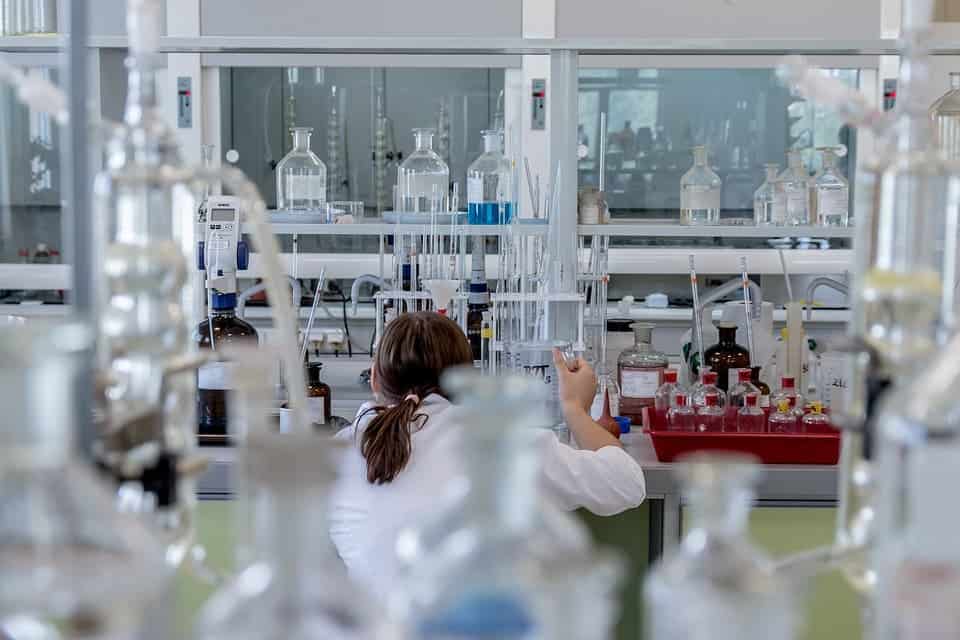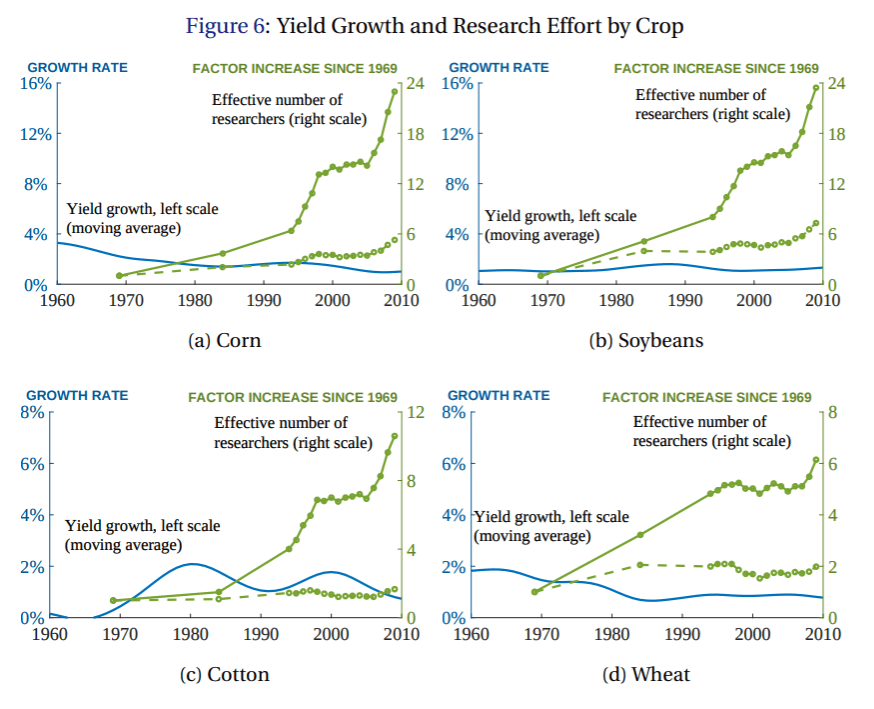The well of new ideas might be drying up — or at least getting deeper.

A paper penned by researchers from MIT Sloan and the Stanford University raises a worrying possibility. New ideas, they write, are harder and harder to come by.
Now, they’re not talking about ideas pertaining to cool new places to hang out or something like that. The paper limits itself strictly to new ‘ideas’ in the context of scientific research. And, according to their findings, research productivity is falling rapidly across the board.
Uphill road
The team argues that this drop in research productivity comes down to the fact that scientists need to put in more and more effort just to maintain the same pace — even a slightly slower pace in some fields — of idea generation as a few decades ago. In other words, each new addition to the body of scientific knowledge takes more and more work.
The authors cite Moore’s Law — that the numbers of transistors that can be packed into a computer processor doubles every two years — as a prime example of this effect. This doubling requires a growth rate of embedded transistors of 35% per year, but it takes more in-depth research each year to reach this goal.

Image credits Nicholas Bloom et al., 2018, NBER.
“Many commentators note that Moore’s Law is not a law of nature, but instead results from intense research effort: Doubling the transistor density is often viewed as a goal or target for research programs,” they write.
“The constant exponential growth implied by Moore’s Law has been achieved only by a massive increase in the amount of resources devoted to pushing the frontier forward.”
Research efforts into semiconductor technology have intensified 18-fold since the 1970s, they report. Research productivity, however, has fallen by the same factor over this time period — evening each other out. This means that it’s about 18 times as hard today to push Moore’s Law to its next ‘level’ than it was half a century ago.
It’s not only computer sciences that are affected, even agricultural output follows the same trend. Per-acre yields of corn, soybeans, wheat, and cotton grew about 1.5 percent on average every five years between 1960 and 2015, according to the paper, but the number of researchers trying to boost these yields has risen by a factor of between 3 to 25, depending on the crop. “Yield growth is relatively stable or even declining,” the team concludes, “while the effective research that has driven this yield growth has risen tremendously.”

Image credits Nicholas Bloom et al., 2018, NBER.
In the pharmaceutical industry, research efforts rose by 6% per year since the early 1970s, while productivity (measured in how many new drugs were approved by the Food and Drug Administration) fell by 3.5% per year. When comparing the years of life saved by cancer research per 100 people since the 1970s to the number of medical studies published over the same period, the team found that productivity declined by a factor of 1.2 for all work, and a factor of 4.8 when looking only at clinical trials.
Overall, in the broader economy, the authors report that it takes about 15 times as many researchers today, compared to 30 years ago, for a company to maintain the same rate of revenue growth.
“Just to sustain the constant growth in GDP per person, the U.S. must double the amount of research effort put into searching for a new idea every 13 years to offset the increased difficulty in finding new ideas,” the paper reads.
So what gives?
John Van Reenen, an MIT Sloan professor of applied economics and co-author of the paper, thinks one factor that could explain this trend is that researchers simply need more time to reach the level of education they need in order to start producing new ideas.
“As the total amount of knowledge becomes larger and larger and larger, it becomes increasingly difficult to get to its frontier of that knowledge,” Van Reenen said. “It was much easier a couple thousand years ago.”
We handle this increase in knowledge by focusing our education on a narrow domain — think of how your education became progressively more specialized as you moved from school to high-school, university, then to a master’s degree or even a Ph.D. However, this breeds its own set of issues. Innovation often requires people of various different specializations working together, and “it’s very complicated to get all of these people and ideas together,” Van Reenen said. “That, itself, could be a reason why things start slowing down.”
Not all is lost, however. The team also reports that the productivity of research efforts targeting cancer actually rose from 1975 to the mid-1980s, which would “suggest that it may get easier to find new ideas at first before getting harder, at least in some areas.”
Van Reenen also says that we’re a long way off from any sort of hard limit on technological growth. Population growth, the increasing ease of communication, and globalization also offer a lot of opportunities for new ideas to emerge. Just as long as “we keep increasing the amount of resources we put into research,” he explains “we’ll keep [generating new ideas].”
The paper “Are Ideas Getting Harder to Find” has been published (link to pre-print version) in the journal National Bureau of Economic Research.


